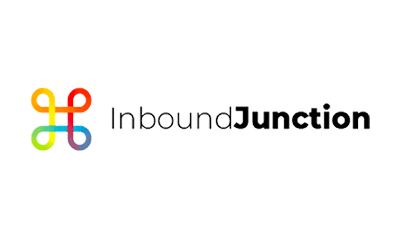Top 3 Alternative Platforms to Patreon for Artists
Since its formation in May 2013, Patreon has been a market leader for artist-driven content. Their business model asks users to pay a small fee to become a ‘Patron’ of a certain artist, then get access to all of their content. Currently, Patron is worth around $4 billion dollars, with an incredibly wide user base all subscribing to their favorite creators.
However, since 2018, Patreon has been consistently getting into trouble over late payments, content restrictions, and, most of all, censorship of its artists.
How has censorship impacted Patreon?
As Patreon is a company founded by giants like Visa and Mastercard, there is continual pressure to uphold certain standards online. One of the ways that this has directly impacted Patreon is the mass censorship of the Alt-right. From notorious public speaker Milo Yiannopoulos, who made a short-lived career for himself off controversial statements, to Carl Benjamin, many creators were kicked off the platform for their political views.
While we’re not going to be getting into the distinction between free speech and hate speech here, these are just core examples of how Patreon inflicts censorship on its user base. These bans caused one of Patreon’s biggest supporters to delete their account, closing it out because he felt that the recent bans were “more readily explained by political bias”. Not sharing the political views of those banned, but just wanting justice for unfair removal, Harris pulled out due to Patreon’s censorship of these speakers.
Patreon’s censorship also extends into the world of art. In March of 2020, Patreon also started a large debate on Twitter, following the removal of a popular artist’s channel. While Patreon took to Twitter to defend their act of censorship, they made the problem even worse for themselves when they then - rather ironically - started to hide people’s responses to their thread.
Instead of facing the accusations of censorship, Patreon doubled down and tried to hide any comment that accused them of doing so. This being Twitter, their plan fell through, with many artists within the community taking up arms against Patreon.
What platforms should I use if I no longer want to use Patreon?
In this modern age, there is a range of alternatives that you can turn to for any platform you don’t want to support. This is especially the case with Patreon, with the rise of blockchain providing decentralized communities within which creators can make what they’d like without fear of censorship.
We’ll be discussing three of these:
-
Creaton
-
HuddIn
-
Glass Protocol
Let’s break down what these platforms can offer.
Creaton
Founded in 2018, Creaton was made as a direct competitor to Patreon, created in order to give artists the opportunity to make art without the fear of censorship. They hold two main principles at the center of their platform: artist-owned art and a censorship-free playground.
Craton is a decentralized content-sharing platform that allows creators to share their artwork with fans directly in the form of NFTs. A creator’s content is encrypted when it’s uploaded onto the platform. Fans who then pay for the content will be able to decrypt the artwork and look at it.
Aiming to create a beneficial system for artists, Creaton also has a unique billing strategy. Instead of paying for a monthly subscription fee, fans pay for the actual time they’re on the platform. Due to this, artists and creators are paid continuously for the time spent on their artwork instead of just getting a lump sum at the end of the month.
Artists will be able to upload blogs, videos, and photos directly to the platform, allowing them to put up whatever form of art they’d like. This gives complete power to the creators, the decentralized platform allowing them complete freedom over their own content.
As this is a subscription service, artists can generate a continuous income instead of just selling certain pieces. In short, a user is buying access to looking at content on the platform.

Key Takeaways:
-
A decentralized platform that offers no censorship
-
Payment model allows for continuous artist pay
-
Users will pay to see an artist’s content
-
Flexible content: blogs, pictures, videos, digital drawings are all uploadable to the platform
HuddIn
HuddIn’s standout feature is that users can import content from their Instagram and TikTok profiles, instantly minting them into sellable NFTs. From there, users will be able to browse through NFTs, finding ones they like and then purchasing the digital rights to a photo.
This provides a method for creators or artists to make a living off their content, selling the automatically minted NFTs on their profile. If you’d like, you can even use the in-app camera to take photos and directly transform them into sellable NFTs on the platform.
Due to the social connections of this application, it is only partially decentralized, making it not quite censor-free like Creaton. The semi-decentralization is so they can automatically connect to other social media, as well as pulling comments and likes and attaching them to the NFTs.
By creating an account on HuddIn, you’ll be able to display all of the different NFTs that you’ve bought on the platform. This turns the app into an Instagram format application that shows off all the different NFTs that people have bought the digital rights to.
The purpose of this is so that creators can ‘Share the story behind their NFT collections’, putting captions and adding personalized banners to their profile. No matter what you think of the idea, this is an additional way to monetize your art if you’re an artist looking to grow on platforms that aren’t Patreon.

Summary:
-
Links social media accounts and turns post into NFTs for artists to sell
-
Automatic, helping artists form a new stream of income
-
Acts as a social media for NFTs, with people showing the photos and videos they’ve purchased on their own profile
Glass Protocol
Glass XYZ started off as a video platform, with every single video being uploaded being instantly converted into an NFT. Users are able to click on a video and bid on the rights, with auctions opening and users trying to outbid one another.
At the end of the auction, someone will officially own the rights to the music video, information of their ownership being stored in the blockchain. Essentially turning YouTube into a decentralized platform where you can buy the rights to a video, Glass Protocol provides instant liquidity for NFTs.
The platform is constantly seeing new artists upload their videos, with people bidding on them or buying them outright with the tap of a button. If you’re an ex-Patreon content creator who specializes in video content, then this platform provides a way to monetize your videos online.

Summary:
-
Creators upload videos, which are then minted as NFTs
-
Users can bid to buy the rights to a video
-
Videos can also be watched without buying them
Final Thoughts
To escape the censorship that platforms like Patreon have come to be known for, many are turning to decentralized or semi-decentralized solutions. On this list, we’ve collected three great alternatives to Patreon, giving you a range of different options.
No matter whether you’re an artist looking to sell your work, a photographer that wants to reach a new audience, or a video marker, these platforms will accommodate your art.







